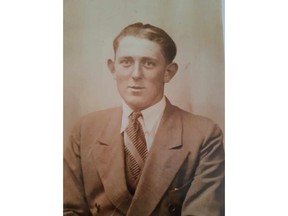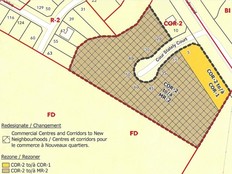Backyard History: Liberty on the rocks - a shootout at Bouctouche
The fastest rum-running boat was ambushed by RCMP near the dark shores of Bouctouche in 1937, leading to shots fired and a smoke screen to hide behind

Article content
This is part one of a three-part series examining rum runner Hugh Corkum’s adventures aboard the bootlegging boat the Liberty.
“Only a bullet could have caught us that night. Our boat was the finest and fastest rum-runner ever to work on this coast,” wrote Hugh Corkum, a crew member of the famous liquor smuggling ship the Liberty.
That night, in 1937, the Liberty stealthily navigated through the treacherous waters off the coast of Bouctouche, laden down with a load of very valuable and very illegal alcohol.
It was then the depths of the Great Depression, and many Maritimers smuggled illegal booze from European ships through Canada to the United States. There it would sell for enormous sums of desperately needed money.
In 1929, right before the stock market crashed, the average New Brunswicker was making $292 a year. In the depths of the Depression, New Brunswickers’ average income fell to a paltry $185 a year. And that was if they had a job at all – the unemployment rate hit a staggering 40 per cent in the Maritimes region.
It wasn’t that Maritimers wanted to get involved in illegal smuggling – it was that they had to break the law to survive.
Corkum himself had been a rum-runner for a couple years in the 1920s, but had quit after saving money to go to college in early 1929.
By the time he graduated, the Great Depression set in. He wrote that when he looked for jobs, “the answer was always ‘I am sorry.’ They told me they were laying off men. That was a great disappointment.”
With no other options he decided he would “go rum-running, because of the money.”
Aboard the Liberty, Corkum was the ship’s wireless operator, who would later write a book about his experiences as a rum runner called On Both Sides Of The Law.
In that book he wrote: “I received my orders via wireless (radio) to pick up 300 kegs from the mother ship for a drop near Bouctouche … It was risky because the weather was fine and we had a long trip ahead of us. Our appointed arrival time was midnight.”
As the ship glided towards Bouctouche, the six-man crew kept an eye out for the feared cutters of the Royal Canadian Mounted Police.
Corkum wrote: “The RCMP were more efficient, with faster cutters and more familiarity with our methods of operations than before. … Rum-running on the Canadian Atlantic seaboard was really a game of cat and mouse. The RCMP were the good guys and we, of course, were the villains.”
The Liberty was a specially constructed custom-made 60-foot ship built for speed. She was powered by three massive airplane engines, and was considered the fastest boat on the Atlantic seaboard.
Corkum wrote in his later memoirs that it was as they were headed towards their rendezvous when things started to go wrong. “As it was getting closer to dusk and we were approaching the (12-mile international waters) limit, a plane flew very low overhead.”
The Mounties had spotted them. Though the plane departed, Corkum lamented that “every policeman in New Brunswick would be on a sharp lookout for us.”
The Liberty was racing through the darkness toward a desolated patch of coast outside of Bouctouche, in Kent County. There the rum-running operations were controlled by ferociously independent local farmers and fishermen. None of the big gangs could make headway into Kent County.
Corkum wrote that as they approached the shore, “the only thing in our favour was that it was very dark, but even that had its bad points, because searchlights could penetrate the darkness and there was a greater possibility of surprise. To put it in perspective, I would say we were looking for trouble.”
As they drew closer to the coast, Corkum wrote: “I thought I saw a black object blot out several of the shore lights. I asked the cook to look. He said ‘yes that could be a cutter.’ Whatever it was, it had no lights on. I told the captain. He immediately turned the boat around … lo and behold looming right ahead of us was another cutter … It was a trap.”
Fortunately though, the Liberty boasted a smoke screen. When turned on it would emit a massive cloud of black smoke which would obscure the vision of the pursuing Mountie cutters.
Corkum wrote: “In no time flat we were on our way out, at full speed and with smoke screen coming out of our manifold. Within 10 seconds we were hitting 38 knots or more. They turned on a searchlight, but our smoke screen obliterated it completely. We still had to go past the other cutter, which was about three-quarters of a mile outside of us. She also put on her searchlight on us when we got close. We turned 90 degrees to port, and our smoke-screen did a good job of blanking her out. It was quite a sight, watching the reflection of the searchlights trying to penetrate the heavy smoke screen.”
Seeing the Liberty getting away, Corkum wrote that the Mounties opened fire “at pointblank range. But we didn’t hear a thing … thanks to our very efficient smoke-screen.”
After they escaped to the safety of the high seas, Corkum reflected: “It really was a wild night. This spectacular incident … must have been heard and witnessed by many on the shore. To see the Liberty flying along on a dark, calm, night at 38 knots, with a full smoke-screen, two cutters in hot pursuit and some live ammunition being thrown at us for good measure, must have been a sight to behold … The Liberty was 60 feet of dynamite.
“We escaped from right under their noses … so we lived to see another day. But I believe the RCMP marine section also learned a lesson. They were learning fast about our ways, and I could feel the noose getting tighter.”
Next week: Part two of the Liberty on the rocks trilogy: The Initiation of a rum-runner! Listen to a more detailed version of this story on the Backyard History Podcast: backyardhistory.ca/podcast












Postmedia is committed to maintaining a lively but civil forum for discussion. Please keep comments relevant and respectful. Comments may take up to an hour to appear on the site. You will receive an email if there is a reply to your comment, an update to a thread you follow or if a user you follow comments. Visit our Community Guidelines for more information.